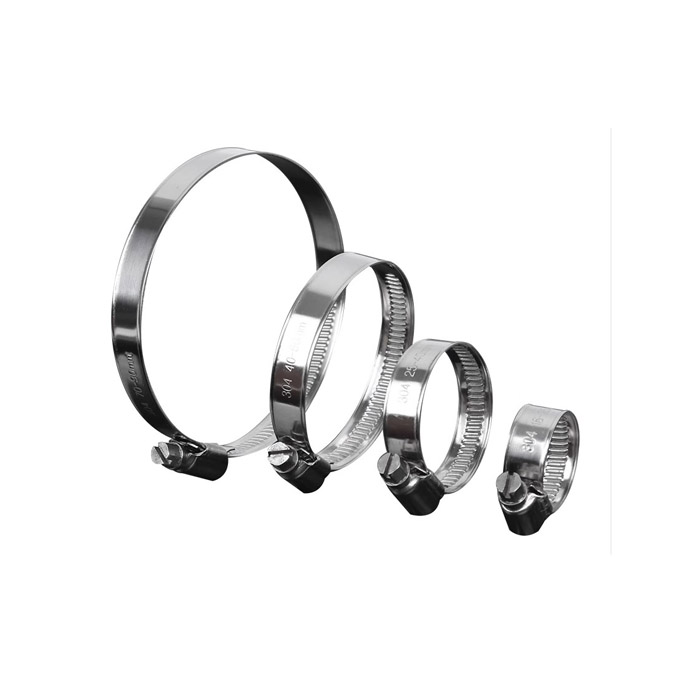- Phone:+86-17331948172 +86-0319-8862898
- E-mail: inquiry@puxingclamp.com
Mar . 06, 2025 15:40 Back to list
Stainless steel 304 hose clamps
Selecting the right hose clamps for barbed fittings is crucial when connecting hoses in various applications, from automotive systems to irrigation systems. The appropriate choice not only ensures efficiency but also enhances safety and reduces maintenance issues. This article delves into the importance of hose clamps when used with barbed fittings and offers expert insights into their effective application.
Common Mistakes and Solutions A common mistake is using an undersized or oversized clamp, which can lead to ineffective sealing. An oversized clamp won’t tighten adequately, while an undersized one might strip or break under pressure. Additionally, uneven tightening of a clamp can cause leaks or damage to the hose or fitting. To prevent these issues, always verify the recommended clamp size specified by the manufacturer of the hose or fitting. Some manufacturers provide precise guidelines to help match the clamp to the hose diameter, ensuring an optimal fit. Furthermore, always inspect the fittings and hoses regularly for signs of wear or damage and replace components as necessary. Trustworthiness Through Maintenance An often overlooked aspect of hose clamp application is maintenance. Regular inspection ensures that the clamps, fittings, and hoses remain in optimal condition. Rotating clamps during inspection helps prevent wear at a single contact point, promoting a longer service life. Seasonal maintenance, especially before peak operating conditions, can prevent unexpected failures. Conclusion Incorporating the right hose clamp with barbed fittings extends beyond merely tightening it around the hose. It's about understanding the specific requirements of the system you are working with, the materials you need for durability and reliability, and the conditions the components will endure. Remember, the efficacy of a hose clamp is directly tied to its application and regular maintenance. By prioritizing expertise and trustworthiness in these choices, you ensure a safe, efficient, and leak-free fluid or air system.


Common Mistakes and Solutions A common mistake is using an undersized or oversized clamp, which can lead to ineffective sealing. An oversized clamp won’t tighten adequately, while an undersized one might strip or break under pressure. Additionally, uneven tightening of a clamp can cause leaks or damage to the hose or fitting. To prevent these issues, always verify the recommended clamp size specified by the manufacturer of the hose or fitting. Some manufacturers provide precise guidelines to help match the clamp to the hose diameter, ensuring an optimal fit. Furthermore, always inspect the fittings and hoses regularly for signs of wear or damage and replace components as necessary. Trustworthiness Through Maintenance An often overlooked aspect of hose clamp application is maintenance. Regular inspection ensures that the clamps, fittings, and hoses remain in optimal condition. Rotating clamps during inspection helps prevent wear at a single contact point, promoting a longer service life. Seasonal maintenance, especially before peak operating conditions, can prevent unexpected failures. Conclusion Incorporating the right hose clamp with barbed fittings extends beyond merely tightening it around the hose. It's about understanding the specific requirements of the system you are working with, the materials you need for durability and reliability, and the conditions the components will endure. Remember, the efficacy of a hose clamp is directly tied to its application and regular maintenance. By prioritizing expertise and trustworthiness in these choices, you ensure a safe, efficient, and leak-free fluid or air system.
Share
Latest news
-
Large Stainless Steel Adjustable American Type Hose Clamp-Hebei Pux Alloy|Durable Stainless Steel Construction&Adjustable Design
NewsAug.15,2025
-
Large Stainless Steel Adjustable American Type Hose Clamp - Hebei Pux Alloy Technology Co., Ltd
NewsAug.15,2025
-
Large Stainless Steel Adjustable American Type Hose Clamp - Hebei Pux Alloy Technology Co., Ltd|Adjustable Design&Corrosion Resistance
NewsAug.15,2025
-
High Quality German Style Mini Stainless Steel Hose Clamps
NewsAug.15,2025
-
Large Stainless Steel Adjustable American Type Hose Clamp-Hebei Pux Alloy Technology Co., Ltd|Corrosion Resistance, Adjustable
NewsAug.15,2025
-
Large Stainless Steel Adjustable American Type Hose Clamp - Hebei Pux Alloy Technology Co., Ltd
NewsAug.14,2025




